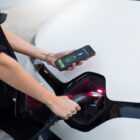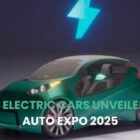Understanding The Different EV Charging Levels: Comprehensive Guide to Level 1, Level 2, And Level 3 Charging
EV sales are rising fast. Hence, existing and new EV owners should understand the different types of charging levels available. With charging infrastructure growing fast, you can fast charge your vehicle. Speed of charging and power output categorize EV charging levels. Different levels determine how fast the depleted battery recharges.
About Level 1 charging
It is the basic charging type for EVs. It uses a 120V standard household outlet for charging purposes. Special equipment or tools are not required apart from the charging cable. Power output is approximately 1.3kW and 2.4kW. Its charging speed is 4-5 miles an hour. It is ideal for residential settings where people prefer to leave their EVs plugged in for overnight charging. Any standard outlet will do the work.
Other benefits of Level 1 chargers
Additional equipment or installation is not required. Since existing household outlets are used no extra costs are involved. Hence, you can save money on this charger. You can use any standard outlet available in your garage or other premises. Set up is also easy. It is ideal for drivers who prefer overnight charging and short commutes. It also provides backup charging.
About Level 2 charging
It uses a 240V outlet, similar to home appliances like ovens and dryers. They are found in residential settings, workplaces, and public charging stations. They offer faster charging. Their power output requirement is 3.7kW and 22kW. They provide a per-hour charging speed of 10-60 miles.
Their benefits
People who travel longer distances and desire faster charging should avail of type 2 charging station in New Delhi. You can charge your EV overnight at your home. It is also installed at office buildings, shopping centers, and parking lots. It offers convenience to customers and employees allowing them to charge their vehicles as they shop or work. It fully charges EVs overnight and makes them ready to use.
About Level 3 charging
It is also the fastest charging available and is called DC Fast charging. It uses DC (Direct current) to charge and offers quick recharges. Thus, it is an ideal option for commercial use and covering long distances. It requires 50kW to 350kW power output and 400V to 800V. Charging it for 20 to 30 minutes allows traveling 60 to 200 miles.
Their benefits
These chargers make excellent highway charging stations and suit long-distance travel. You may recharge your EV during short breaks and enjoy traveling long distances. It is also used in public transportation and fleet operations. Commercial EVs using this charger can operate to the optimum and help curb pollution. It provides quick top-ups, thus reducing downing significantly.
Understand their differences
- Cost: Operational and installation costs increase with each charging level.
- Efficiency: Higher charger levels require less time to charge the EV.
- Speed: Level 3 is much faster than Level 1 or 2.
Mileage differences
- Level 3 charger: 20 to 30 minutes of charging helps cover a distance of 60-200 miles. It is ideal for commercial settings and highway stations.
- Level 2 charger: An hour of charging helps cover a distance of 10 to 60 miles. It is ideal for public charging stations, workplaces, and homes.
- Level 1 charger: An hour of charging helps cover only 4 to 5 miles. It is ideal for people who travel less and are satisfied with the overnight home charging facility.
Which charging level supports rapid charging?
Level 3 chargers offer rapid charge. Providing the highest power output, they reduce EV charging time. They are an ideal choice for public transport and transit vehicles. They ensure the fleet remains operational and functions to the optimum. Delivery vehicles enjoy fast turnaround, thus ensuring completing multiple trips conveniently. Highway stations offer quick recharges, thus ensuring cover long distances without long stops.
DC vs. AC in EV charging
- AC Charging: Levels 1 and 2 use AC power. The onboard charger does the conversion job. However, it is a less efficient and slower process.
- DC Charging: Level 3 charger operates on DC power. Bypassing an onboard charger sends DC power to the car’s battery. Hence, it enables quicker charging.
Make well-informed decisions!
It is crucial to understand the different charging levels to make appropriate decisions. Whether you charge on the go, at work, or in your home, know the charging capabilities. It ensures your EV can make road trips without experiencing hiccups.



